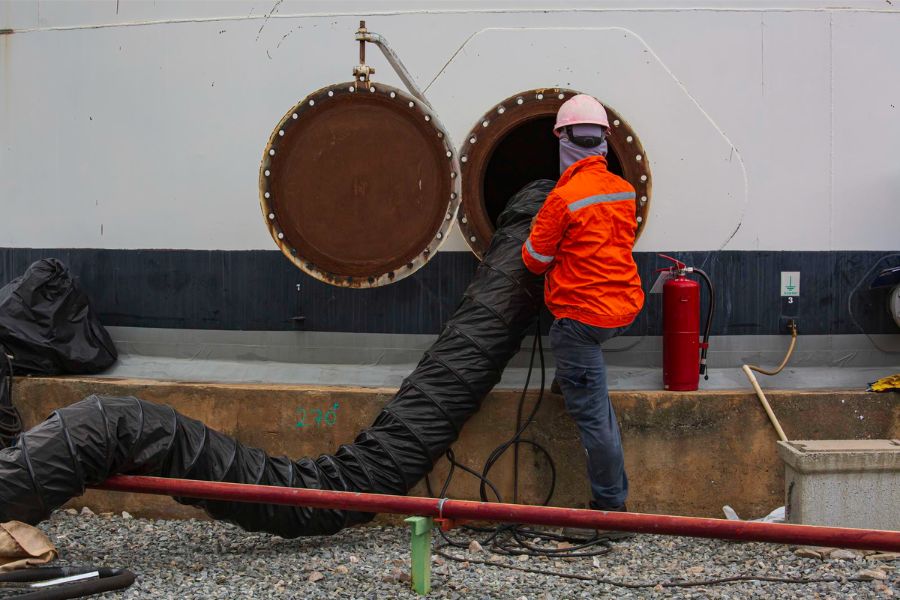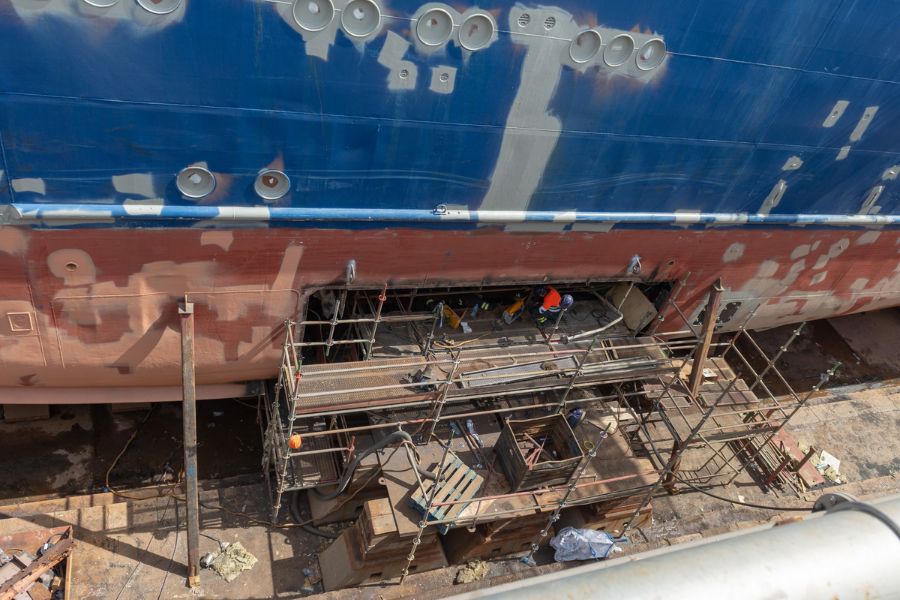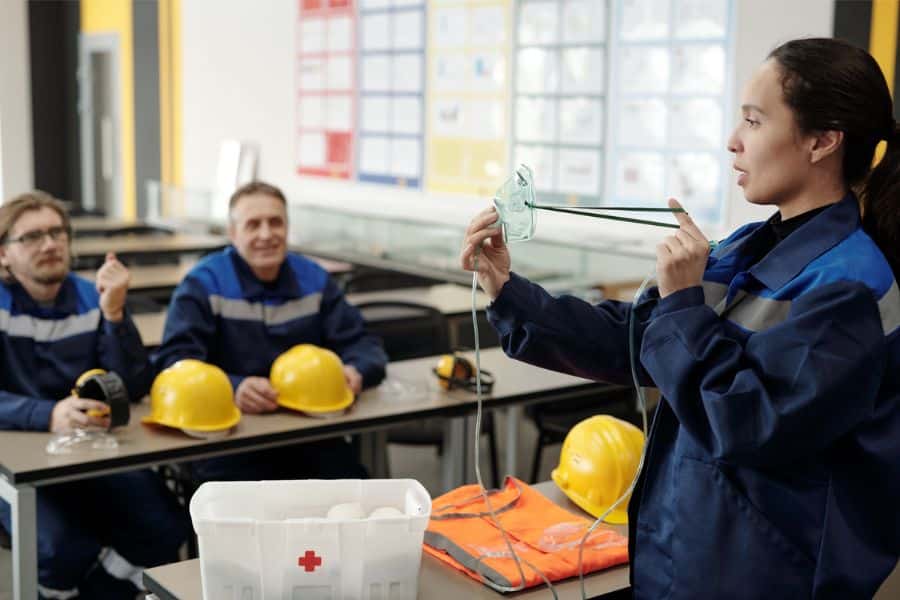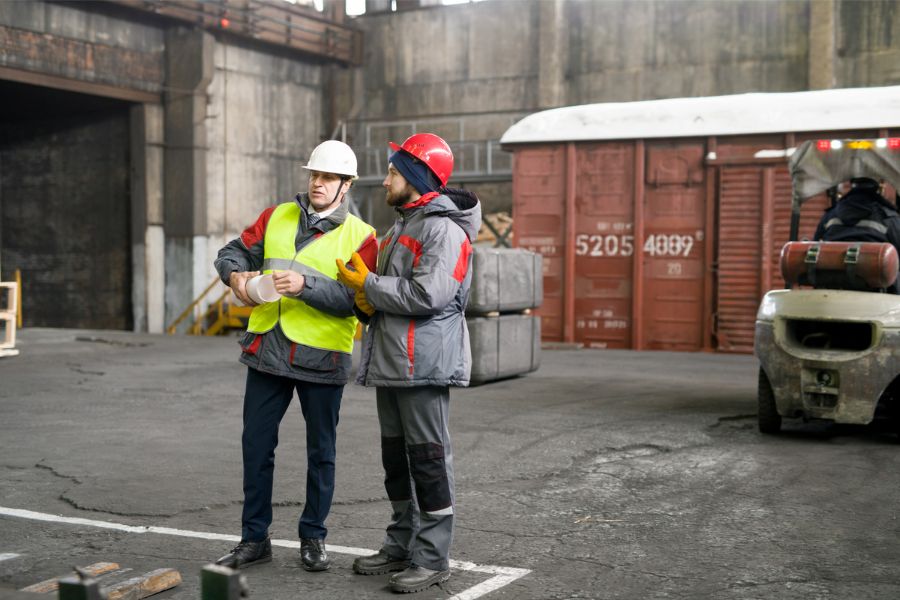Enhancing Corrosion Control in Shipping: The Role of Cathodic Protection Courses
Introduction

The maritime industry relies heavily on the efficient operation and longevity of its vessels, making corrosion control a critical aspect of ship maintenance. Corrosion, often accelerated by the harsh marine environment, poses a significant threat to the structural integrity of ships, leading to safety concerns, increased maintenance costs, and reduced operational efficiency. In addressing this challenge, one of the key methodologies employed is cathodic protection a technique that involves the use of sacrificial or impressed current to mitigate corrosion.
Brief overview of the shipping industry
The shipping industry plays a pivotal role in global trade, serving as the backbone for the transportation of goods across oceans and connecting economies worldwide. It encompasses a diverse range of vessels, from cargo ships and container carriers to oil tankers and cruise liners. The significance of the shipping sector cannot be overstated, as it facilitates the movement of raw materials, finished products, and essential commodities, contributing to economic growth and international commerce.
This section will provide a concise overview of the key components and functions within the shipping industry. It will touch upon the various types of vessels, their roles, and the interconnected nature of maritime trade that underpins the global economy.
Importance of corrosion control in shipping

Corrosion is a pervasive challenge in the maritime environment, posing a significant threat to the structural integrity and operational efficiency of ships. The harsh conditions of saltwater, exposure to aggressive marine organisms, and constant immersion in corrosive environments make vessels susceptible to metal deterioration. Corrosion not only compromises the safety of the ship but also leads to increased maintenance costs, reduced lifespan of critical components, and environmental hazards due to potential leaks.
This subsection will delve into the critical importance of implementing robust corrosion control measures within the shipping industry. It will highlight the economic and safety implications of corrosion-related issues, emphasizing the need for proactive strategies to mitigate the impact of corrosion on maritime assets. Additionally, it will introduce the concept of cathodic protection as a key technology in corrosion prevention, paving the way for a more in-depth exploration in subsequent sections.
Pain Points in Shipping Corrosion Control

Shipping vessels face significant challenges in corrosion control, which can compromise their structural integrity and lead to substantial financial implications. In this section, we will explore the primary pain points associated with corrosion in the shipping industry.
Corrosion as a major challenge

Corrosion stands out as a formidable challenge for shipping operations due to its pervasive nature and adverse effects on various aspects of maritime structures. It is imperative to delve into the multifaceted impacts of corrosion to fully comprehend the urgency of effective corrosion control measures.
1. Impact on structural integrity
Corrosion poses a direct threat to the structural integrity of ships, impacting their durability and overall lifespan. As metal components succumb to corrosion, they weaken, potentially leading to structural failures. Understanding the specific vulnerabilities in different parts of a ship’s structure is crucial for implementing targeted corrosion control strategies.
Corroded areas, such as the hull, can compromise the vessel’s ability to withstand harsh environmental conditions, increasing the risk of accidents, especially in adverse weather or during long voyages. By examining the critical points where corrosion tends to occur, shipping operators can develop more precise corrosion mitigation plans.
2. Financial implications of corrosion-related damages
Beyond the physical consequences, corrosion in shipping has significant financial implications. Repairing and replacing corroded parts, coupled with downtime for maintenance, can result in substantial costs for shipowners and operators. Furthermore, corrosion-related damages may lead to unexpected breakdowns, disrupting schedules and potentially causing loss of revenue.
Investing in preventative measures becomes economically prudent, and this is where cathodic protection courses come into play. Proper education and training in cathodic protection can empower maritime professionals to proactively address corrosion issues, mitigating the financial burden associated with reactive maintenance and repair.
Common causes of corrosion in shipping

Corrosion is a persistent challenge in the maritime industry, compromising the structural integrity of ships and leading to significant maintenance costs. Understanding the common causes of corrosion is crucial in developing effective preventive measures.
1. Exposure to saltwater: The marine environment poses a formidable threat to the integrity of ship structures due to the corrosive nature of saltwater. Saltwater contains electrolytes that facilitate the electrochemical reactions leading to corrosion. The constant exposure of ships to seawater accelerates the corrosion process, affecting various components such as hulls, pipelines, and other metal structures.
2. Atmospheric conditions: In addition to saltwater exposure, atmospheric conditions, including humidity and temperature variations, contribute significantly to corrosion in shipping. The combination of moisture-laden air and temperature fluctuations accelerates the corrosive processes on metal surfaces, making it imperative for ship operators to employ effective corrosion mitigation strategies.
3. Corrosive cargo: Certain cargoes transported by ships can have corrosive properties, further exacerbating the corrosion challenge. Chemicals, gases, or other materials with corrosive characteristics can lead to accelerated deterioration of the ship’s structural components. Understanding the corrosive potential of cargo is essential for implementing preventive measures and ensuring the safety and longevity of the vessel.
4. Electrochemical reactions: Corrosion is fundamentally an electrochemical process, wherein metal undergoes oxidation and reduction reactions. The exposure to different metals and alloys in a ship’s structure, coupled with the presence of electrolytes like saltwater, triggers electrochemical reactions leading to corrosion. This intricate process underscores the need for a comprehensive understanding of the electrochemical aspects of corrosion for effective control.
Importance of Cathodic Protection Courses

Cathodic Protection Courses play a pivotal role in the maritime industry by providing crucial knowledge and skills to professionals involved in corrosion control. The significance of these courses can be understood through various aspects.
Understanding Cathodic Protection (CP)
Cathodic protection is a crucial aspect of corrosion control in shipping, and understanding its importance through dedicated courses is paramount for professionals in the maritime industry. The primary goal of cathodic protection is to prevent the corrosion of metal structures submerged in seawater, such as ship hulls and offshore platforms. The importance of cathodic protection courses can be elucidated through various key aspects:
1. Definition and principles: Cathodic Protection is a corrosion control method that involves applying an electric current to a metal structure to prevent it from corroding. This section will delve into the definition of Cathodic Protection, outlining its basic principles. It will cover the electrochemical processes that occur during CP, emphasizing the role of anodes and cathodes in the protection of ship structures.
2. How CP systems work: This subsection will provide an in-depth exploration of the functioning of Cathodic Protection systems. Participants in Cathodic Protection Courses will learn about the different types of CP systems, such as sacrificial anode and impressed current systems. The discussion will include the electrochemical reactions that take place in these systems, elucidating how they safeguard ships from corrosion. Practical examples and case studies may be incorporated to enhance understanding.
Benefits of Cathodic Protection in Shipping

Cathodic protection plays a crucial role in the maritime industry, offering a range of benefits that contribute to the longevity and reliability of metal structures on ships. This section explores the advantages of employing cathodic protection in the shipping sector.
1. Prolonging the life of metal structures: Cathodic protection courses are designed to impart knowledge about the mechanisms involved in safeguarding metal structures from corrosion. By creating a controlled electrochemical environment, cathodic protection helps in extending the lifespan of ship components made of metals such as steel or aluminum. The courses educate professionals on the science behind cathodic protection, emphasizing its ability to mitigate the corrosive effects of seawater and other harsh marine environments.
2. Minimizing maintenance costs: One of the key benefits highlighted in cathodic protection courses is the cost-effectiveness it brings to ship maintenance. By implementing effective corrosion control strategies, vessels can significantly reduce the frequency and extent of maintenance activities. This section delves into the various cost-saving aspects taught in these courses, emphasizing the role of cathodic protection in minimizing the need for repairs, replacements, and overall maintenance expenditures.
3. Ensuring vessel safety and reliability: Safety and reliability are paramount in the shipping industry. This subsection explores how cathodic protection contributes to the overall safety of vessels by preventing structural failures caused by corrosion. Cathodic protection courses emphasize the importance of creating a protective shield around the ship’s metal components, ensuring the vessel’s structural integrity even in challenging maritime conditions.
Addressing Specific Challenges

Shipping faces unique challenges in terms of corrosion due to constant exposure to harsh marine environments. In this section, we will delve into the specific challenges that shipping vessels encounter, such as saltwater exposure, varying temperatures, and the presence of corrosive agents. The discussion will highlight how these challenges contribute to accelerated corrosion and the need for specialized corrosion control measures.
1. Cathodic protection in different marine environments: Cathodic protection is a crucial aspect of corrosion prevention in the maritime industry. This section will explore the application of cathodic protection in different marine environments. It will cover the principles behind cathodic protection and how it effectively mitigates corrosion on ships. Emphasis will be placed on the role of sacrificial anodes and impressed current systems in safeguarding various ship components from corrosion, ensuring a comprehensive understanding of the mechanisms involved.
2. Corrosion control for various ship components (hull, ballast tanks, etc.): A significant focus of cathodic protection courses is the protection of specific ship components prone to corrosion. This part of the discussion will zone in on how cathodic protection techniques are tailored for different ship areas, including the hull and ballast tanks. The section will provide insights into the unique challenges each component faces, detailing how cathodic protection courses equip professionals with the knowledge and skills needed to implement effective corrosion control strategies.
Case Studies

Successful implementation of cathodic protection
Cathodic protection is a vital technique in safeguarding ship structures from corrosion. This section delves into real-world case studies where the implementation of cathodic protection courses has proven successful. Examining instances where the courses were applied effectively will provide insights into the practical aspects of their deployment.
Example Case Study: The Retrofitting Success
In a case study involving the retrofitting of cathodic protection systems on a fleet of aging cargo vessels, the course participants demonstrated a comprehensive understanding of the installation process. The proper integration of sacrificial anodes and impressed current systems resulted in a substantial reduction in corrosion rates, extending the lifespan of the vessels and reducing maintenance costs.
Positive outcomes in terms of corrosion prevention
This section focuses on the tangible benefits observed after the implementation of cathodic protection measures. By analyzing the positive outcomes, we aim to underscore the importance of comprehensive training through cathodic protection courses for industry professionals.
Example Outcome: Corrosion Rate Reduction
Upon completion of cathodic protection courses, a shipping company reported a significant reduction in corrosion rates across its fleet. The courses equipped the personnel with the knowledge to assess and optimize protection systems, leading to a remarkable decrease in maintenance expenses and downtime. This tangible success emphasizes the value of investing in training programs centered around cathodic protection.
Available Courses on Cathodic Protection

Cathodic protection plays a crucial role in mitigating corrosion in maritime structures, particularly in the shipping industry. To enhance corrosion control measures, individuals and professionals can benefit from a range of courses specifically designed to provide comprehensive knowledge and skills in cathodic protection. These courses cover various aspects, including the principles of cathodic protection, types of cathodic protection systems, installation techniques, and maintenance practices.
1. Fundamentals of Cathodic Protection: This course delves into the foundational principles of cathodic protection, exploring the electrochemical processes involved and the fundamental theories behind corrosion control in maritime environments.
2. Types of Cathodic Protection Systems: Participants in this course learn about different types of cathodic protection systems, such as sacrificial anode systems and impressed current systems. The curriculum includes detailed discussions on the advantages, disadvantages, and applications of each system.
3. Installation and Inspection Techniques: Focusing on practical aspects, this course provides hands-on training in the installation of cathodic protection systems. It also covers inspection techniques to ensure the effectiveness and longevity of these systems.
4. Maintenance and Troubleshooting: This course equips participants with the knowledge and skills needed to perform regular maintenance on cathodic protection systems. It also addresses common troubleshooting issues to maintain optimal performance.
How Cathodic Protection Courses Address Pain Points

Providing in-depth knowledge of corrosion mechanisms
Cathodic Protection Courses play a pivotal role in addressing the pain points associated with corrosion in shipping by offering comprehensive insights into corrosion mechanisms. Understanding the underlying processes of corrosion is fundamental to developing effective preventive measures. These courses delve into the science behind corrosion, covering topics such as electrochemical reactions, environmental factors influencing corrosion, and the specific challenges faced in maritime environments.
Through detailed modules and practical examples, participants gain a profound understanding of how corrosion occurs in ship structures, pipelines, and other marine assets. This knowledge equips them with the ability to identify potential corrosion threats early on, facilitating proactive measures to mitigate risks and extend the lifespan of critical components.
Training on the selection and installation of CP systems

Another crucial aspect of cathodic protection courses is providing hands-on training in the selection and installation of Cathodic Protection (CP) systems. These systems are paramount in preventing corrosion by manipulating the electrochemical reactions that drive the process.
Participants are educated on the various types of CP systems available, including sacrificial anode and impressed current systems, and the considerations for selecting the most suitable option based on the specific maritime conditions. The courses also cover the proper installation procedures, taking into account factors such as material compatibility, electrical isolation, and system monitoring.
Practical exercises and case studies are often integrated into the courses, allowing participants to apply theoretical knowledge in real-world scenarios. This training not only enhances their skills in CP system installation but also ensures that they can troubleshoot issues and optimize system performance, contributing significantly to the overall corrosion control strategy in the shipping industry.
Conclusion

In conclusion, the imperative to enhance corrosion control in shipping underscores the pivotal role of Cathodic Protection Courses. As vessels navigate corrosive marine environments, the knowledge and application of cathodic protection principles become paramount in preserving the integrity and longevity of critical structures. These courses offer a comprehensive understanding of corrosion mechanisms, preventive measures, and the effective utilization of cathodic protection systems. Investing in such educational programs equips maritime professionals with the expertise to implement cutting-edge corrosion control strategies, ultimately fostering safer and more sustainable shipping practices.
For those seeking to delve into Cathodic Protection Courses, the Corcon Institute of Corrosion emerges as a distinguished institution. Renowned for its commitment to excellence in corrosion education, Corcon provides accessible and high-quality courses that cater to the specific needs of the shipping industry. Interested individuals can avail themselves of these courses through the institute’s user-friendly platform, ensuring a seamless and enriching learning experience.
By choosing Corcon Institute of Corrosion, professionals not only gain valuable insights into cathodic protection but also contribute to the overarching goal of elevating corrosion control standards within the shipping sector. Embracing these courses is not just an educational pursuit; it is a proactive step towards fortifying the maritime industry against the pervasive threat of corrosion, promoting sustainability, and ensuring the longevity of vital maritime assets.
Image Reference : Freepik
Disclaimer: All trademarks, logos, and brand names are the property of their respective owners. All company, product, and service names used in this website are for identification purposes only. Use of these names, trademarks, and brands does not imply endorsement.

